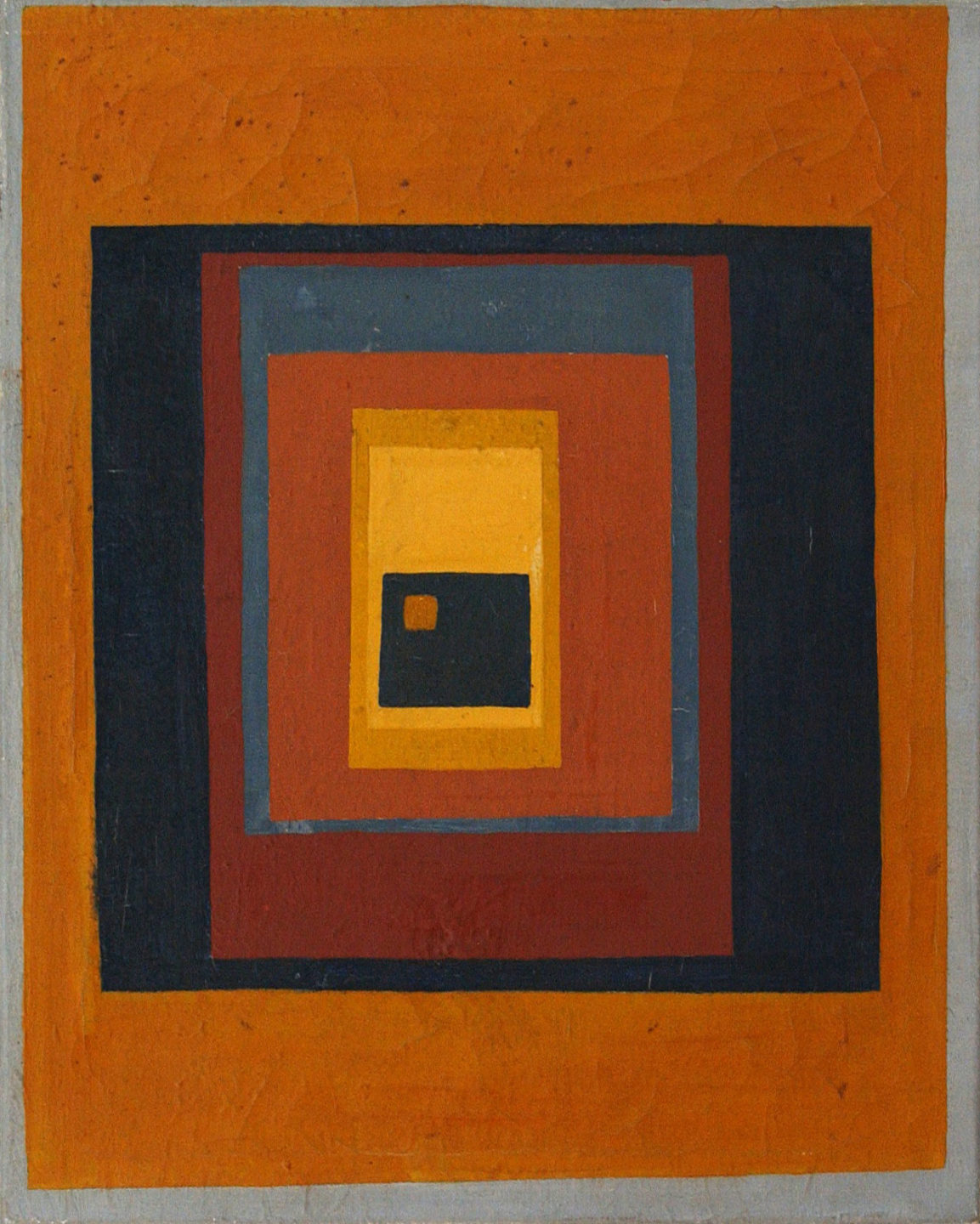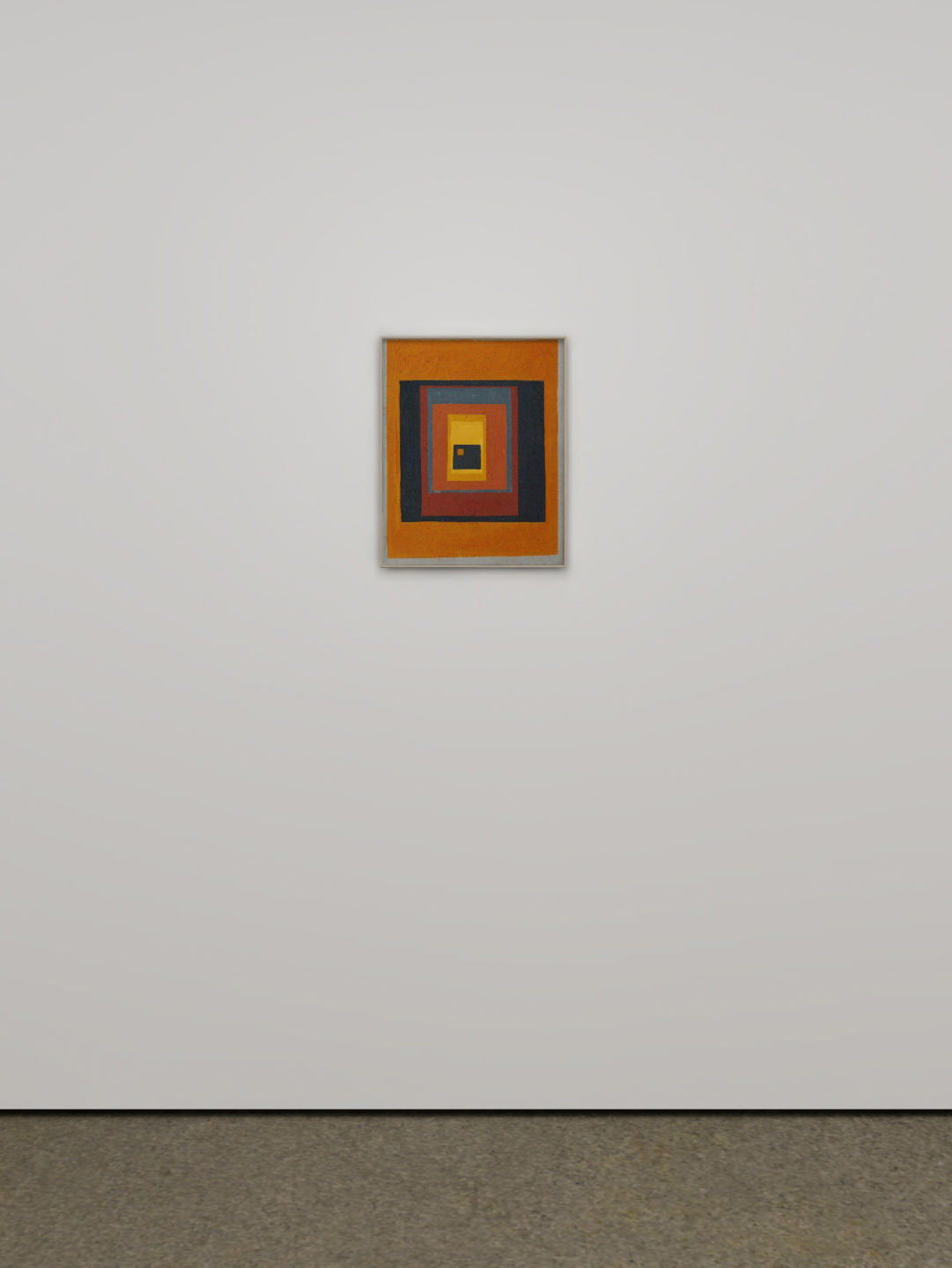Stephen Willats Architectural Exercise No.1 1961
Oil on canvas
50.5 x 40.5 cm
19 7/8 x 16 in
Completed in 1961, the earliest work on view is one of the first to show Willats’ engagement with architecture. It is a response to – or a ‘deconstruction of’ as the artist puts it – one of the first residential tower blocks built in Notting Hill Gate, West London, near to where the artist worked (Willats’ Saturday job at the time was very close to the site, providing ample opportunity to survey the building’s progress). Also of influence were writings including Merleau-Ponty’s Phenomenology of Perception and discussions around modernism in international publications such as Art in America, Cimaise and Art d’Aujourd’hui, in which Willats was introduced to artists such as Josef Albers. ‘We were rebelling against this pictorial picture making and this figuration that came out of the English tradition,’ Willats recalls. ‘It was the start of something.’
It was also in 1961 that Willats began to write manifestos, copying these on to carbon paper and distributing them at exhibition openings. The manifesto reproduced below concludes with the lines ‘Life does not exist on a two dimensional basis. When one walks down a street the sensation is not only a visual one, but a tactile and sound experience.’
‘I was interested in the idea of the manifesto because it was a way of creating a territory or climate for your work to operate in,’ Willats says. ‘You issued it in advance of an action, that was the principle. The whole point of this manifesto was we were living in a dynamic situation and that the world is not two dimensional, that reality itself is made up of all different kinds of sensory component parts and we felt that all this should come together. We wanted to move away from this straitjacket of 1950s painting which constrained the artist within some sort of elitist situation. We wanted to break out of it. That was a common feeling.’
Stephen Willats was born in 1943 in London, where he continues to live and work. Recent solo institutional exhibitions include Languages of Dissent at Migros Museum, Zürich (2019). His work has also recently been featured in the Chicago Architecture Biennial (2019– 2020), Still Undead: Popular Culture in Britain Beyond the Bauhaus at Nottingham Contemporary (2019–2020), Pushing Paper: Contemporary Drawing from 1970 to Now at the British Museum (2019–2020), Objects of Wonder, British Sculpture 1950s–Present, featuring works from the Tate collection, at the PalaisPopulaire, Berlin (2019).

